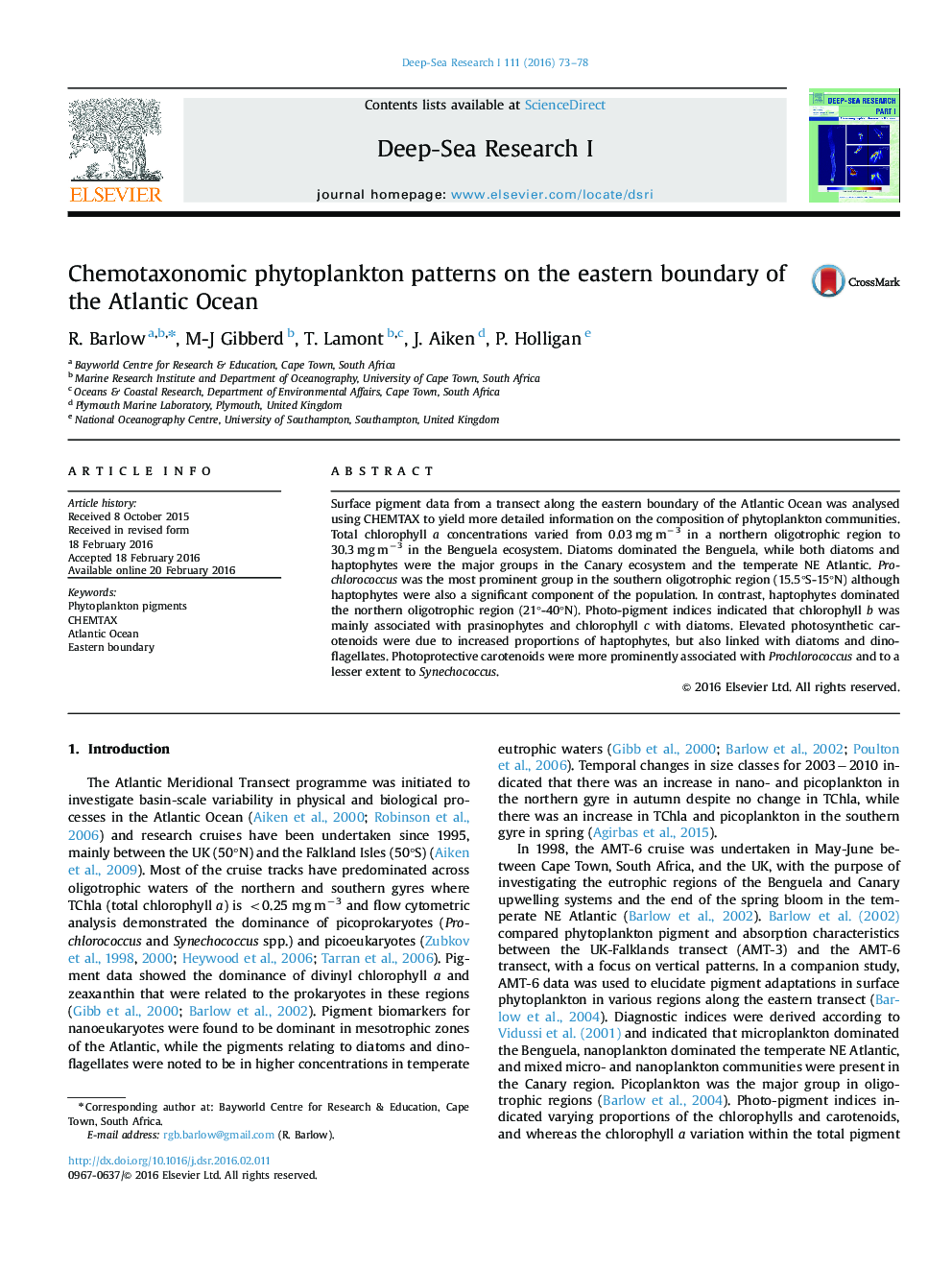| Article ID | Journal | Published Year | Pages | File Type |
|---|---|---|---|---|
| 4534440 | Deep Sea Research Part I: Oceanographic Research Papers | 2016 | 6 Pages |
•Surface pigment data analysed by CHEMTAX elucidated phytoplankton community structure.•Diatoms dominated the Benguela ecosystem.•Diatoms and haptophytes dominated the Canary ecosystem and the temperate NE Atlantic.•Prokaryotes and haptophytes were major groups in oligotrophic regions.•Photo-pigment indices provided information on pigment adaptation along the transect.
Surface pigment data from a transect along the eastern boundary of the Atlantic Ocean was analysed using CHEMTAX to yield more detailed information on the composition of phytoplankton communities. Total chlorophyll a concentrations varied from 0.03 mg m−3 in a northern oligotrophic region to 30.3 mg m−3 in the Benguela ecosystem. Diatoms dominated the Benguela, while both diatoms and haptophytes were the major groups in the Canary ecosystem and the temperate NE Atlantic. Prochlorococcus was the most prominent group in the southern oligotrophic region (15.5°S-15°N) although haptophytes were also a significant component of the population. In contrast, haptophytes dominated the northern oligotrophic region (21°-40°N). Photo-pigment indices indicated that chlorophyll b was mainly associated with prasinophytes and chlorophyll c with diatoms. Elevated photosynthetic carotenoids were due to increased proportions of haptophytes, but also linked with diatoms and dinoflagellates. Photoprotective carotenoids were more prominently associated with Prochlorococcus and to a lesser extent to Synechococcus.
